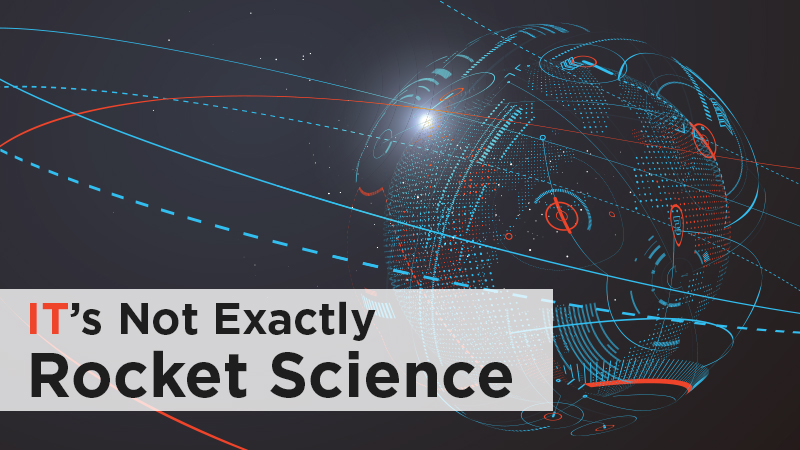The Most Important Trend: Evolving How We Work

As we look at the exciting technology trends of the Next IT Decade (the next three years), one mega trend stands out: We will work very differently.
Why? Because we will need to work faster and more effectively with fewer wait-states (aka “bureaucracy”). Consumer technologies are evolving very quickly and have made us highly productive at home. However, enterprises are slower to adopt these trends, largely because there are legacy technologies and the cost of switching is higher and more time consuming.

So, because the Jet Propulsion Lab (JPL) and NASA are made up of IT consumers, a key disrupter is the adoption of the most meaningful emerging consumer capabilities in the enterprise. If JPL and NASA can do this, we can improve employee productivity and satisfaction, while also delivering the NASA mission faster, more securely, and at a lower cost.
But, which technologies and capabilities will matter and how can we use them? The answer is to predict the human behavior trends as human behavior affects IT, which affects human behavior, which affects IT…you get the point. Simply put, understanding human behavior trends helps us select which technologies are worth prototyping in the near-term, as those technologies are likely to be adopted in the enterprise.
From our research, the key human behavior trends for the next few years are the following:
- Who will do the work? Entrepreneurs will come up with ideas. Makers will use 3-D printing, Arduino, and Raspberry Pi to prototype a solution. Crowdsourcing will help us find specific expertise and new, nontraditional partners who will work from anywhere to accomplish the NASA and JPL missions–this will also include public hackathons.
- How will they work? They will use an agile approach, as well as open source and consumer technologies in the cloud to rapidly prototype a minimum viable product (MVP) and pivot quickly when needed. Crowdsourcing will be used to create the MVPs, both internally to the enterprise through hackathons and Kickstarters and externally through the NASA Open Innovation contracts, as well as other approaches.
- What technologies and tools will they work on? They will apply advanced analytics and deep learning to make smart data from the current big data. They will evolve the cloud as the default development and operations platform, with rapid course corrections when needed. DevOps will be the expected way to work. The key enablers will be Internet of Things, wearables, natural user interfaces, and conversation-as-a-platform.
- What are the key challenges they will face? We will no longer be able to lay out a long-term, fixed architecture. Instead, we will need to create a chaotic architecture, where frequent changes with effective and automated analytics is the new normal. Because of the size, scale, and speed of continuous development/continuous integration, manual operations will be replaced with automation and this change can be difficult both technically and culturally. Cybersecurity becomes ever more important and needs to be built in to all the solutions and automated with advanced visual and predictive analytics. Luckily, these challenges are not unique to our enterprise. By collaborating with others, we can meet these challenges quicker.
By paying attention to the human behavior trends, we will evolve the way we work to adopt new technologies faster, create automated and fully scalable solutions, and get effective help from new and varied partners.
Most importantly, this will help us use new techniques to answer the big questions quicker, such as:
- Is there life in space?
- How can we put humans on Mars?
- How can we redirect an asteroid?
- Where is Earth 2.0?
- How can we help protect Mother Earth?
And that’s what it’s all about. An exciting future indeed!
